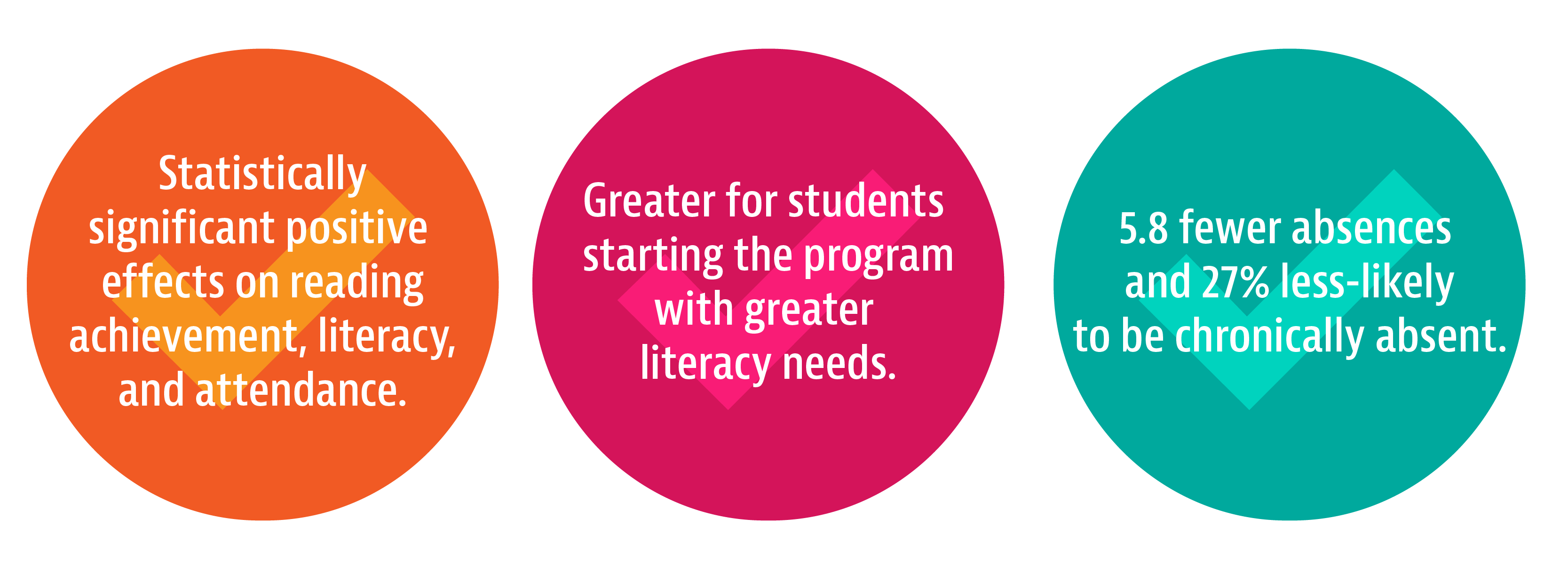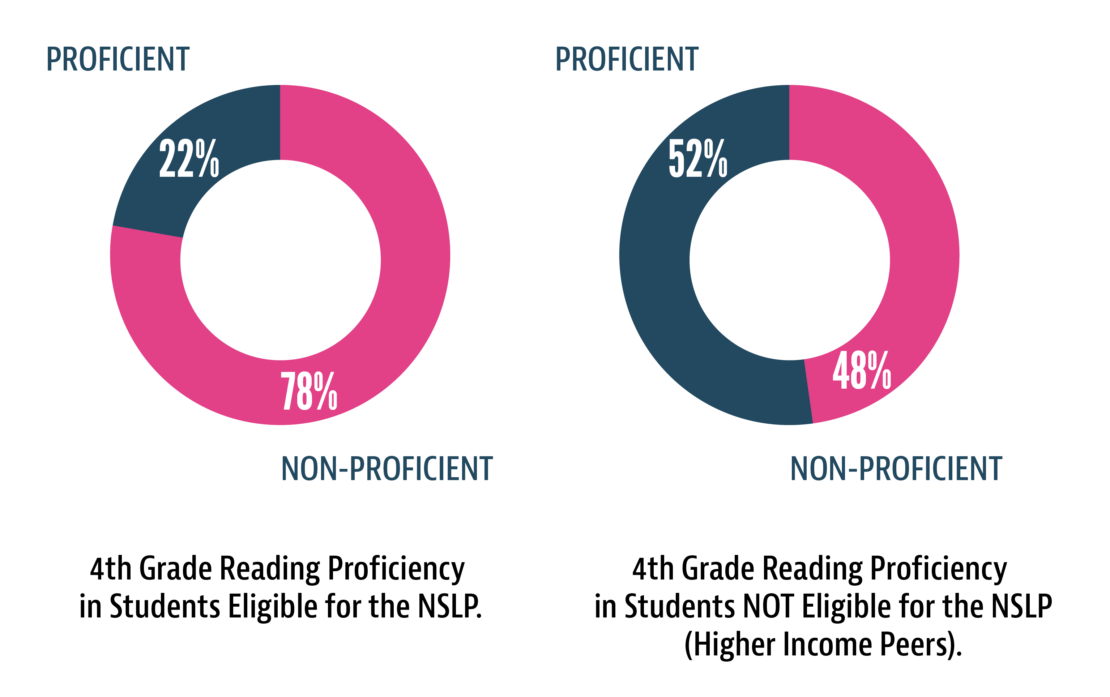Future Forward is a cost-effective, research-based early reading intervention that works. Future Forward’s program model is proven to improve student reading achievement by integrating one-on-one tutoring and family engagement into its design. The program specifically serves students in Kindergarten, first grade, second grade, and third grade who have been identified as struggling readers. By reaching children through a multi-tiered strategy that affects multiple sectors of their daily experience, the Future Forward program is more effective than any one approach or intervention on its own. Each Future Forward site is supervised by a certified teacher or youth serving professional and has dedicated space to support literacy instruction and house Future Forward curriculum and materials. The Future Forward program is freestanding, using dedicated staff and resources, yet has the full collaboration of school administrators and classroom teachers.
History
Future Forward’s program model is based on multiple research studies that have proven the effectiveness of both “develop[ing] the literacy skills of early-grade students and support[ing] families as they learn to support the literacy development of their students” (Jones, 2015, p. 1). By supporting the needs of the whole child, Future Forward joins other successful interventions and meets the “strong evidence definitions” laid out in the Every Student Succeeds Act (ESSA), and demonstrates that young, struggling readers can make significant yearly progress when given the tools, resources, and attention required to catch up to their peers.
In October 2017, the Department of Education awarded Education Analytics, Inc. a $7.8 million Education Innovation and Research (EIR) grant to implement Future Forward across multiple regions in the country and evaluate its impact. EA has since established 15 Future Forward sites in three states, partnering with six school districts, as well as local after school providers and other organizations, and is undergoing a random control trial evaluation conducted by Socially Responsible Evaluation in Education (SREed).
About the Education Innovation and Research Program at the Department of Education
The Education Innovation and Research (EIR) Program, established under section 4611 of the Elementary and Secondary Education Act (ESEA), as amended by Every Student Succeeds Act (ESSA), provides funding to create, develop, implement, replicate, or take to scale entrepreneurial, evidence-based, field-initiated innovations to improve student achievement and attainment for high-need students; and rigorously evaluate such innovations. The EIR program is designed to generate and validate solutions to persistent educational challenges and to support the expansion of effective solutions to serve substantially larger numbers of students.
Need
Third grade is a critical benchmark: The shift from students learning to read, to students reading to learn. Students without a basic level of reading competency by third grade are more likely to struggle academically and have social and behavioral issues in subsequent grades. These students are four-times as likely to drop-out of high school than proficient readers, and dropouts are more likely to experience negative outcomes, including lower annual earnings and higher potential for mental and physical health problems.
Early intervention is key: the likelihood of student dropout can be predicted with up to 70% accuracy by third grade, based on reading ability and prior retention. Given the potential negative long-term consequences of low reading proficiency, the fact that only 37% of fourth graders across the country are proficient in reading underscores the magnitude of the problem on a national scale.
Research from the field also shows us that struggling students are disproportionately students of color and lower socioeconomic status. National Assessment of Educational Progress (NAEP) reading test scores reflect persistent achievement gaps between students eligible for the National School Lunch Program (NSLP) and their non-NSLP counterparts.
In addition, these students demonstrated lower proficiency levels in fourth- and eighth-grade reading than their higher-income peers. With poverty rates rising among public school students, there is a clear and urgent need for cost-effective, research-based interventions that promote positive literacy outcomes for all students.
Solution
One-on-One Tutoring. The in-school component provides students with a reading intervention through one-on-one tutoring, following a research-based model, geared toward increasing positive study habits, academic success, and engagement.
Family Engagement. The family component includes regular contact with families through monthly events, text messages and phone calls, newsletters, and home visits, all geared to increasing skills to support children’s academic success.
Future Forward is a research-proven, cost-effective, K–3 early reading intervention that answers this need by improving student reading achievement through research-based literacy programming within the school and family. Future Forward was birthed as the SPARK early literacy program in Milwaukee, WI which was classified by the Center for Research and Reform in Education (CRRE) at Johns Hopkins University as one of a small number of literacy interventions that both work and meet the “strong evidence definitions” laid out in the Every Student Succeeds Act (ESSA).

In their external evaluation of the The Program Model, the Socially Responsible Evaluation in Education (SREed) at University of Wisconsin-Milwaukee found that including school-day one-on-one tutoring and intensive family engagements in a literacy model yielded positive and statistically significant impacts on student outcomes. Further, the positive impact of the program was shown to remain stable one year after the end of participation: former participants scored significantly better on the spring STAR Reading assessment compared to control students, and former participants had 2.9 fewer school absences compared to control.
The research evaluation of the program met What Works Clearinghouse standards and suggests promise for Future Forward’s impact as it is currently implemented in 14 sites across three different states. Future Forward expects third party evaluation findings from the federal EIR grant will demonstrate a similar degree of impact on reading achievement and absenteeism.
If your school district or state education agency is interested in making Future Forward available to your schools, please reach out to futureforward@edanalytics.org to learn more about how you can participate.
Read "The Results from a Multi-Site Regression Discontinuity Impact Study of the Future Forward Literacy Program" report here!
Further Reading
Future Forward’s Evidence for ESSA:
Fiester, L. (2010). Early Warning! Why Reading by the End of Third Grade Matters. Baltimore, MD: The Annie E. Casey Foundation.
Fiester, L. (2013). Early Warning Confirmed: Research Update on Third-Grade Reading. Baltimore, MD: The Annie E. Casey Foundation.
Center for Labor Market Studies. (2009). Left Behind in America: The Nation's Dropout Crisis. Retrieved from northeastern.edu. .
Hernandez, D. (2012). Double Jeopardy: How Third-Grade Reading Skills and Poverty Influence High-School Graduation. Baltimore, MD: The Annie E. Casey Foundation.
Jones, C. (2015). The Results of a Randomized Control Trial Evaluation of the SPARK Literacy Program. Milwaukee, WI: Socially Responsible Evaluation in Education (SREed).
U.S. Department of Education. (1992-2017). Nations Report Card. Accessed from: NAEP Reading Report Card

